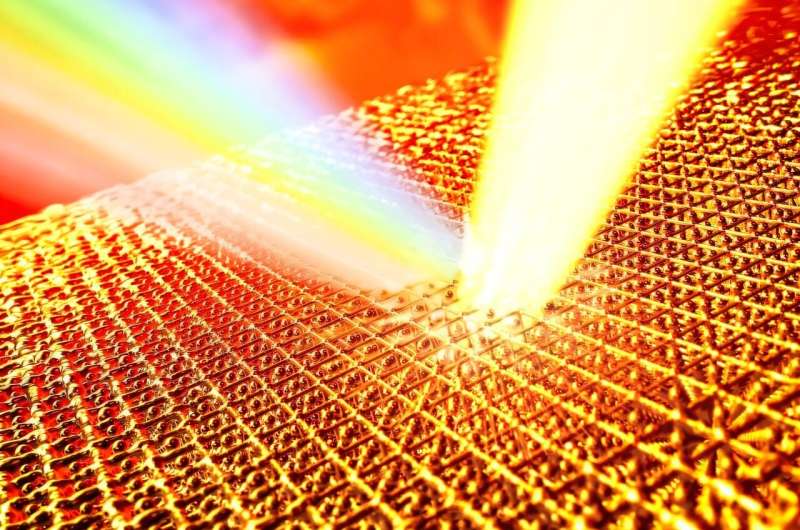Science
New Research Uncovers Insights into Gold, Faces, and Gut-Brain Link

Recent scientific investigations have yielded fascinating discoveries across various fields, from archaeology to neurobiology. Key findings include the transportation methods of megaliths around Stonehenge, new insights into the behavior of gold at ultra-high temperatures, mechanisms behind face recognition, and the newly identified gut-brain communication pathway.
Gold’s Surprising Behavior at Extreme Temperatures
Researchers at the SLAC National Accelerator have made groundbreaking measurements regarding the behavior of gold at extreme temperatures, challenging long-held scientific theories. They reported the first direct measurement of temperature in a gold sample heated to an astonishing 19,000 Kelvin (approximately 33,740 degrees Fahrenheit), which is 14 times higher than gold’s melting point.
Using a laser to superheat a nanometer-thin sample of gold, the team sent a pulse of ultrabright X-rays through it. The X-rays’ frequency shifted as they scattered off vibrating atoms, revealing the atoms’ speed and thus their temperature. Notably, this temperature exceeded the theoretical entropy catastrophe limit, a point at which materials are expected to suddenly melt or boil.
Tom White, an associate professor of physics at the University of Nevada, Reno, clarified, “It’s important to note that we did not violate the second law of thermodynamics. We demonstrated that these catastrophes can be avoided if materials are heated extremely quickly—in our case, within trillionths of a second.”
Understanding Pareidolia and Gaze Recognition
A study from the University of Surrey has examined the phenomenon of pareidolia—the tendency to see face-like patterns in inanimate objects. This innate human trait may have implications for marketing and advertising strategies.
The research involved 54 participants and focused on how people respond to averted gazes from real faces compared to perceived faces in objects. Findings revealed that while both scenarios redirected attention, the mechanisms differed. Participants processed real faces by focusing on specific features, like the direction of the eyes, whereas with face-like objects, they tended to process overall structure and the positioning of “eye-like features.”
Dr. Di Fu, a neuroscientist involved in the study, stated, “Our research shows that both averted gazes from real faces and perceived faces on objects can direct where we look, but they do so through different pathways.”
Gut-Brain Connection Revealed
In a significant advancement for neurobiology, researchers at the Duke University School of Medicine have identified a direct link between the gut and the brain. This discovery validates the long-theorized concept that the gut acts as the “second brain.”
The identified neurobiotic connection involves signaling from specialized epithelial sensor cells in the colon that detect a common microbial protein known as flagellin. This protein, released by gut bacteria after eating, sends messages to the brain to regulate appetite. Experiments conducted on mice lacking the TLR5 receptor, which detects flagellin, showed that these mice did not stop eating, resulting in weight gain. This finding may have significant implications for future studies related to appetite control, satiety, and obesity.
As research progresses, these findings underscore the interconnectedness of our body’s systems and the potential for new insights into health and behavior.
This report was crafted by Chris Packham, with editing by Gaby Clark, and reviewed by Andrew Zinin, ensuring a high standard of scientific journalism. The ongoing support of readers is vital for the continuation of independent reporting in science.
-

 Health3 months ago
Health3 months agoNeurologist Warns Excessive Use of Supplements Can Harm Brain
-

 Health3 months ago
Health3 months agoFiona Phillips’ Husband Shares Heartfelt Update on Her Alzheimer’s Journey
-

 Science2 months ago
Science2 months agoBrian Cox Addresses Claims of Alien Probe in 3I/ATLAS Discovery
-

 Science2 months ago
Science2 months agoNASA Investigates Unusual Comet 3I/ATLAS; New Findings Emerge
-

 Science1 month ago
Science1 month agoScientists Examine 3I/ATLAS: Alien Artifact or Cosmic Oddity?
-

 Entertainment5 months ago
Entertainment5 months agoKerry Katona Discusses Future Baby Plans and Brian McFadden’s Wedding
-

 Science1 month ago
Science1 month agoNASA Investigates Speedy Object 3I/ATLAS, Sparking Speculation
-

 Entertainment4 months ago
Entertainment4 months agoEmmerdale Faces Tension as Dylan and April’s Lives Hang in the Balance
-

 World3 months ago
World3 months agoCole Palmer’s Cryptic Message to Kobbie Mainoo Following Loan Talks
-

 Science1 month ago
Science1 month agoNASA Scientists Explore Origins of 3I/ATLAS, a Fast-Moving Visitor
-

 Entertainment2 months ago
Entertainment2 months agoLewis Cope Addresses Accusations of Dance Training Advantage
-

 Entertainment3 months ago
Entertainment3 months agoMajor Cast Changes at Coronation Street: Exits and Returns in 2025









